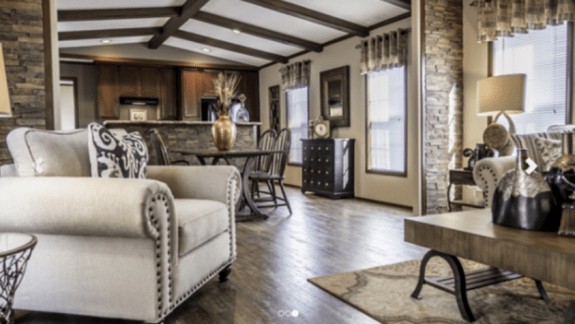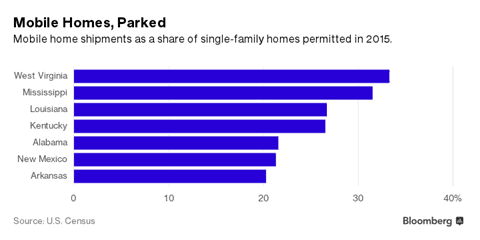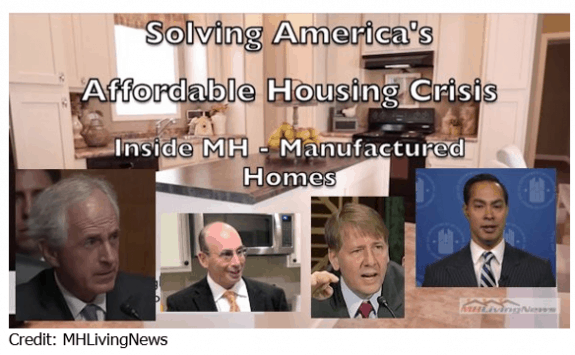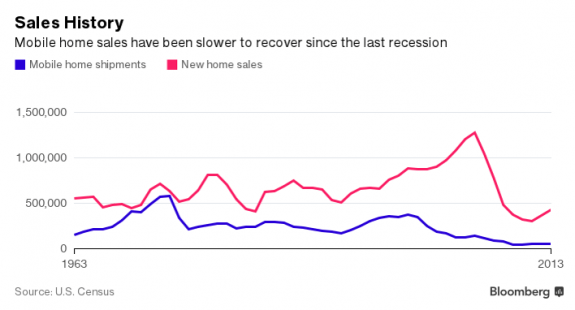
An article in Bloomberg makes the case that manufactured homes – what they refered to as mobile homes (sic), are an obvious solution to the affordable housing crisis.
It starts with a simple question: “Why Aren’t We Building More Mobile Homes?” While their terminology isn’t exactly accurate – and they admit that mobile homes aren’t very mobile – their message is clear. The manufactured home industry provides real hope for the American Dream of home ownership at a reasonable price.
Bloomberg’s article shares metrics that show people in West Virginia accepted delivery of more than 1,000 manufactured homes last year, while 2,000 conventional builders secured permits to for new single family homes. This means that 1 in 3 homes added in the state last year was a manufactured home.
The more facts one sees, the more apparent the solution becomes, as MH professionals know.
The average sales price of a manufactured home was $67,800 in April, 2016. By contrast, the average sales price for a site-built home in the same month was $380,000. While the manufactured home was priced without land, even factoring land cost in creates an amazing savings.
According the stats in the Bloomberg article, 75% of manufactured homes residents have household incomes of less than $40,000 per year.

While the graphic shown above cites that most of the manufactured homes are highly concentrated in southern states (where the bulk of sales have been,) there are over 500,000 manufactured homes in California, which has pushed aggressive regulation that continues to affect the ability to own a home.
While those of us in the industry can see growth, it’s not always as clear to those outside of manufactured housing, due to long insufficiently addressed lingering perceptions.
Bloomberg cites age, loose lending practices and the fact the manufactured home sales peaked in the mid 90’s – when they made up 1 in 3 homes sold nationwide – among reasons they think MH loans started to go bad, flooding the market with foreclosures and thus limiting demand.
While MH is years into its recovery, the data also shows that manufactured home sales have been slower to recover from the last recession than other forms of housing.
Bloomberg points to Doug Ryan, director of affordable home ownership at the Corporation for Enterprise Development (CFED – a Washington-based nonprofit group,) who cites advantages, and challenges, that the industry faces.

“You can put them anywhere you have the land,” said Ryan. As the Daily Business News recently reported, CFED’s Ryan routinely promotes manufactured homes as an important option in the affordable housing crisis.
“What you’re up against is the stigma. You’d have people coming to the planning meetings and saying that you’re killing their home value.” The Daily Business News has covered this scenario playing out in Austin recently.
The Bloomberg piece ends with something for the industry to think about:
“Maybe it’s time for another rebrand. The homes vary in size and price, but they’re generally smaller than the typical site-built home. Instead of “manufactured,” why not borrow the name for another kind of often prefabricated abode: the tiny house.”
Narrative control, it seems, is everything in the fight for the American dream. As regular readers know, MHProNews and MHLivingNews, we’ve extensively covered the many ways that the MH industry is the solution to the housing affordability crisis in the U.S.
Underscoring Bloomberg’s tip to the MH Industry? Rebrand them as tiny houses, which are hot. ##
(Image credits are as shown above.)

Submitted by RC Williams to the Daily Business News, MHProNews


